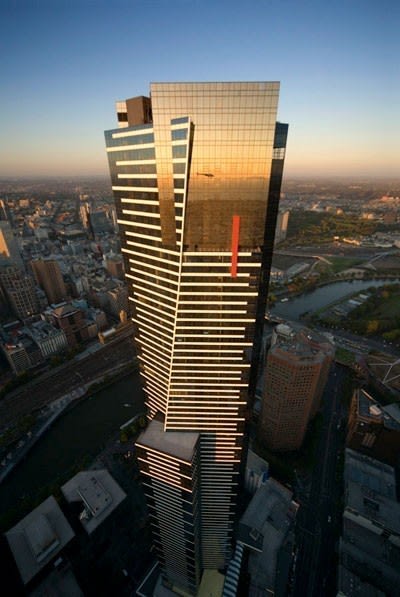Fender Katsalidis' ever-changing place in Melbourne's skyline
As we look to what's ahead for 2012, Property Observer is republishing some of our most noteworthy stories of 2011.
Stand anywhere in the Melbourne

There’s the gold-capped peak of Southbank’s Eureka Tower (pictured above), the rocket-like Republic Tower (pictured above) on the corner of Queen and La Trobe streets, the revolutionary Little Hero building and its Lego-style construction method in Russell Place, and just about all of New Quay in the Docklands, to name just a few.

Fender Katsalidis buildings are typically low-impact, high-density designs that aim to create a “vertical neighbourhood” for
Both Karl Fender and Nonda Katsalidis are public proponents of high-density living as opposed to the flat urban sprawl embraced by the baby boomers.
“You have to keep your mind open to new housing typologies that use less land, and in so doing give greater community facility,’’ Fender says. ‘‘Because the idea of just building houses cheek-by-jowl and going on forever is just not sustainable”. Although he does add: “You don’t have to go building Eurekas all over town”.
Most of FKA‘s apartments are designed to be relatively affordable, which ties in with the firm’s outspoken intention to convince the average buyer to embrace high-density living. Affordability, Fender says, is the key to encouraging buyers to choose an apartment over traditional house and land.
Apartments in the upcoming
At
While FKA’s main focus is on affordable high-density living, the firm does have its trophies. At time of writing, the Eureka Tower’s penthouse, which occupies the entire 84th floor of the building is on the market. It’s expected to fetch upwards of $13 million.

Karl Fender and Nonda Katsalidis’
Considered an early test case for the ambitious Postcode 3000 strategy, Katsalidis’ Melbourne terrace apartments were lauded as a new model for medium- and high-rise living in the
It also established Nonda Katsalidis as an architect to watch in
On Monday we will look at the next step for Fender Katsilidis and its projects outside Victoria.
